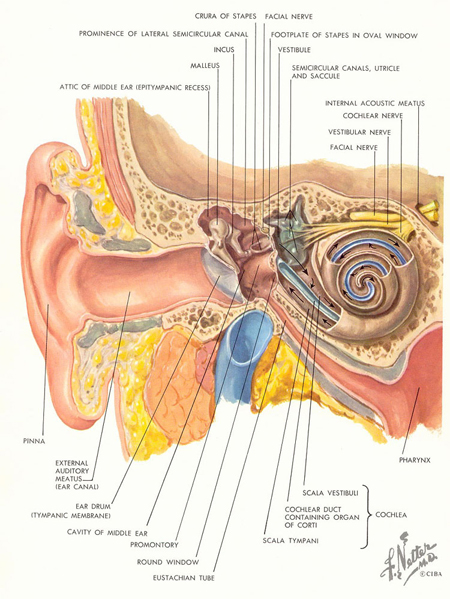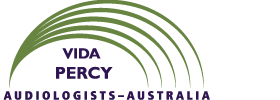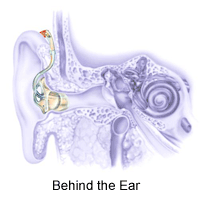How We Hear
Sounds reach our ears as sound waves. These move through the ear canal to the eardrum which vibrates. This in turn causes the three little bones of the middle ear to move backwards and forwards and amplify the vibrations as they pass them into the inner ear (or cochlea). Fluid in the cochlea is set in motion and the vibrations are picked up by special sensory cells known as hair cells, which send electrical signals through the hearing nerve to the brain, so that we can hear

Outer Ear
Sound enters via the pinna before being channelled down the ear canal to the eardrum.
Pinna
The pinna (or auricle) is the visible portion of the ear. It acts as a funnel, amplifying the sound and directing it to the ear canal. While passing through the pinna, sound also goes through a filtering process, which enhances sounds in the frequency range where human speech is normally found. It also adds directional information to the sound.
Ear Canal
The ear canal acts as a tube to transmit the sound to the ear drum before the sound vibrates the ear drum and the three tiny bones in the middle ear.
Eardrum
The eardrum (the tympanic membrane) is a thin, semi-transparent, oval-shaped membrane that separates the earcanal from the middle ear. It is about 1cm in diameter and is very thin and translucent. The eardrum vibrates when hit by sound waves that have travelled through the auditory canal, and then transfers these vibrations to the middle ear.
Middle ear
Behind the eardrum, the middle ear space connects the ear to the nose (via the Eustachian tube) and passes on sound to the inner ear via three tiny bones called the ossicles.
Eustachian Tube
The Eustachian tube has two purposes: it lets fluid drain down the throat, and it equalizes pressure on either side of the eardrum. The tube is about 3.6cm long, made up of cartilage and bone, and lined with very tiny hairs (called cilia). It is connected to the cavity of the middle ear, and at the bottom opens into the nasopharynx (located in the back of the mouth). If excess fluid builds up in the middle ear, it drains down the Eustachian tube into the throat. In order to equalize the pressure in the middle ear with the pressure of the outside air, the Eustachian tube opens to allow air to flow in or out of the tube about every three times we swallow, chew, or yawn.
Ossicles
The ossicles consist of a chain of three small bones (the anvil, hammer, and stirrup) that connect the eardrum with the inner ear via the oval window. The vibration of the eardrum causes each of these bones to move. The force exerted by the stirrup on the oval window is converted into hydraulic pressure waves. The whole ossicular chain is suspended by membranes and ligaments so that it transmits sound very efficiently. (The round window dissipates the pressure generated by the fluid vibrations, thus serves as the release valve: it can push out or expand as needed.)
Inner Ear
The inner ear contains the cochlea, the organ of hearing, which is lined with 'hair' cells.
Cochlea
The cochlea converts physical vibrations into electrical impulses. In its natural shape, the cochlea is coiled up, but when unravelled it measures 3.5cm. Inside the cochlea is the basilar membrane. Standing waves caused by the vibration of the fluid inside the cochlea (called perilymph) form on this membrane. Depending on the frequencies of the vibrations, the peaks of the standing waves will occur at different points along the membrane. Lower frequencies produce peaks near the end of the membrane far from the oval window, while higher frequencies produce peaks near the end of the membrane closer to the window.
Hair Cells
Over two million tiny hairs, called stereocilia, pick up the movement of the basilar membrane and cochlear fluid, and then convert the signals into electrical impulses to be transmitted through the auditory nerve to the brain. (The vestibular nerve carries information from the inner ear about head movement, to enable us to maintain our balance.)
Private Health Fund Rebates and Tax Offsets

Hearing aids may be covered by your private health fund. Please check with your own private health fund if you are eligible for a rebate as each fund varies according to amounts, conditions and rules that can affect your entitlements.
Tax offsets can also be obtained from the Australian Taxation office as hearing aids come under the "medical expenses tax offset". Further advice can be obtained by phoning the Personal Tax Infoline on 132 861 or on 1800 806 215 (TTY)

